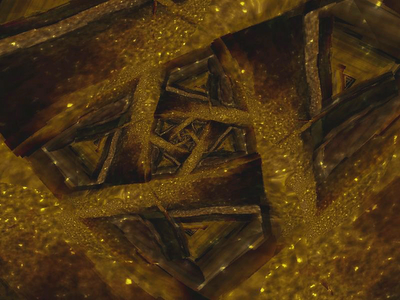
Tive a oportunidade de filmar no interior de minas de carvão, de ouro, de prata, de estanho... São locais terríveis, onde a presença da morte é dominante.
De certa vez, há mais de vinte anos atrás, na Bolívia, assisti a uma cerimônia ao deus protetor da terra, quando os mineiros se preparavam para abrir uma nova galeria. Os mineiros se apertavam num corredor estreito, sentados lado a lado, formando duas fileiras. Ao fundo a imagem de uma figura masculina de dois metros de altura, pintada inteiramente de vermelho, dotada de cornos e com o falus ereto. Os mineiros fumaram cigarros comuns que iam oferecendo à entidade e também bebiam seguidas garrafas de cerveja quente, igualmente oferecida como oferenda na boca aberta daquela figura. Toda a cena estava iluminada únicamente pelo foco das lâmpadas individuais que cada mineiro levava presa ao capacete.
Eu também fumei um cigarro com eles e bebi da sua cerveja quente pelo gargalo. Depois de algum tempo cantando uma ladainha interminável em língua quechua, eles trouxeram um filhote de llama. O animalzinho foi rapidamente sacrificado. Os ossos partidos e o corpo foi esquartejado. Enterraram em seguida os despojos em lugares previamente indicados por um condutor que devia ser uma espécie de xamã, sacerdote ou feiticeiro. Houve uma salva de palmas e a cantilena continuou. A partir dai o trabalho começou. Protegidos pelo espírito dos subterrâneos da Terra, os mineiros bolivianos acionaram os martelos pneumáticos. O ruído da escavação sepultou o coro de vozes rudes daqueles homens. Eu continuei filmando. Mas, sem querer duvidar da proteção daquela figura extraordinária nas profundezas da terra, a sensação de um perigo catastrófico nunca me abandonou. Sintia-me esmagado pela sensação de estar enterrado vivo no interior da mina.
Este fractal tenta representar a angústia no interior de uma galeria de mina. Gosto dessa imagem pois o swirl da espiral não é dominante, não é uma finalidade em si mesmo. O espetáculo do enroscamento da espiral não é a razão dessa imagem. Quis que pudessemos perceber o perigo de "estar lá dentro", como se fosse possível habitar a dimensão de um fractal. Creio que está expressada o desejo de "sair logo dali", pois a iminência de sermos esmagados parece real.
Chamei-o de "A Corrida do Ouro", pelos reflexos dourados nas "traves" que dão sustentação ao conjunto. Pois uma mina no interior da terra nada mais é do que a representação gráfica da cobiça e da ambição humanas. Um animal não resistiria muito tempo lá dentro. O ser humano, com sua capacidade quase infinita de resistir ao sofrimento, consegue passar a vida quase toda dentro daquele buraco insalubre. De uma galeria para outra pode-se passar do calor tórrido ao frio mais enregelante. Alimentos perecíveis não devem ser levados para baixo, pois se decompõem rapidamente. Por que então vamos para lá? É pelo ouro, pela riqueza, pela fortuna, seguindo a miragem insana da nossa ambição.
Comments